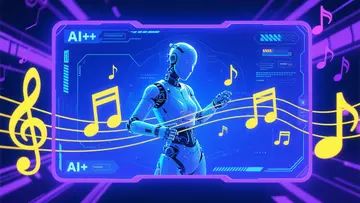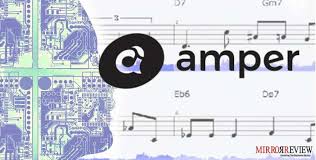Introduction: Creating AI Songs Is Easy—Owning Them Is Not
In 2025, anyone can generate a hit song using tools like Suno, Udio, or Synthesizer V. But when it comes to sharing that song on YouTube, Spotify, or TikTok, things get legally complicated—fast.
If you're an AI singing content creator, understanding copyright law isn’t optional—it’s essential.
From AI cover songs to fully original generative tracks, navigating ownership, permissions, and fair use can determine whether your content gets monetized, removed, or sued.
This guide outlines the top copyright tips for AI singing content creators to help you stay safe, ethical, and successful.

1. Understand the Three Core Rights in Music Copyright
Every song has three copyright layers:
Composition Rights – Lyrics + melody (owned by songwriter or publisher)
Sound Recording Rights – The actual recording (owned by the performer or label)
Performance Rights – Live performance or public playback rights
If you’re using AI to sing covers, you’re affecting all three layers—even if the vocal isn’t real.
?? Copyright Tip:
For covers, you need a mechanical license (composition) and sometimes sync or performance rights, depending on where you publish.
2. Cover Songs with AI Voices Still Require Licensing
Even if your AI singer generates a fully synthetic cover of “Someone Like You” by Adele, it still uses protected lyrics and melody.
Where to Get Cover Licenses:
Easy Song Licensing (U.S.)
Loudr (global)
DistroKid Cover Song License
Songfile (Harry Fox Agency)
?? Tip: Most licenses are cheap (under $20) for non-commercial, online use.
?? Platforms like YouTube and Spotify may still monetize covers on behalf of the original rights holder.
3. AI-Generated Original Songs Can Be Copyrightable—but You Must Claim It Properly
If you generate an original song using a tool like Suno or Udio, you can claim ownership of the lyrics, structure, and publishing—but not always the voice model or instrumental.
? You may own:
Lyrics you typed in
The prompt or structure you creatively defined
The final arrangement if exported with commercial rights
? You may not own:
The AI model (e.g., Udio’s internal voice synthesis tech)
Pre-trained styles or copyrighted voicebanks in SynthV (e.g., Eleanor Forte voice)
?? Copyright Tip:
Check the terms of service—some tools allow commercial use, others only allow non-commercial or personal projects.
4. Voice Cloning Is a Legal Gray Zone—Be Transparent
If you clone a real singer’s voice using tools like Diff-SVC or iZotope VocalSynth, you might violate publicity rights or voice likeness protections, especially if:
The original artist is alive
The clone mimics a specific performance or style
You monetize the result without permission
? What’s safer:
Use open-source or royalty-free voice models
Train your own model with original voice data
Clearly label content as “AI-generated voice” or “voice simulation”
5. Use Public Domain Songs for Risk-Free AI Covers
Looking for legal cover material? Try the public domain. These are songs whose copyrights have expired or were never claimed.
?? Examples:
“Amazing Grace”
“Greensleeves”
Classical works by Mozart, Bach, Beethoven
U.S. songs published before 1929
?? Copyright Tip:
You must still create your own original arrangement—don't reuse copyrighted recordings of public domain music.
6. Check Platform Policies Before Publishing AI Covers
Each platform has unique guidelines around AI and music:
| Platform | AI Cover Policy | Monetization Rules |
|---|---|---|
| YouTube | Allows AI vocals with licensing | Content ID may redirect revenue to owners |
| Spotify | AI-generated originals allowed | Covers need license via distributor |
| TikTok | Covers allowed, but muted if flagged | May remove AI voice if misused |
| SoundCloud | Covers allowed with proper credit | Commercial use depends on distribution |
?? Tip: Label your content clearly—e.g., “AI cover of Taylor Swift – not affiliated.”
7. Watermark or Register Your AI Songs If You Plan to Monetize
If you plan to publish original AI-generated songs, especially on streaming platforms, protect your rights with:
Copyright registration (U.S. Copyright Office or your country’s agency)
ISRC codes for audio fingerprinting
Metadata tags including “AI vocals” and authorship details
?? Tip: Use distributors like DistroKid or Amuse to push your AI songs legally to Spotify, Apple Music, and more.
8. Collaborate Transparently and Credit All Contributors
Many AI songs today involve:
A lyricist (you)
An AI model (the tool)
A visual designer (for the avatar)
A vocal trainer or prompt engineer
?? Credit everyone involved—on YouTube descriptions, streaming metadata, and social media—to stay transparent and ethical.
9. Know What "Fair Use" Does NOT Cover
You cannot claim “fair use” just because:
You changed the style (e.g., jazz cover of rap)
You used an AI voice instead of a real singer
You’re not making money
? These are not valid fair use arguments.
? Fair use typically applies only to:
Commentary or criticism
Educational use (limited scope)
Parody (very narrowly defined)
When in doubt, license the song or create your own.
10. Always Disclose AI Usage in Commercial Projects
Whether you’re pitching a brand collaboration, uploading to Spotify, or publishing on YouTube, disclose when AI tools were used, especially for:
Voice generation
Lyrics written by AI
Synthetic visuals or animations
?? Tip: Add disclaimers like:
“This song was generated using AI voice models and does not feature real vocalists.”
Conclusion: AI Makes Music Creation Easy—But Copyright Is Still Human
AI tools have lowered the barrier to producing professional-quality music. But copyright law has not caught up, and as an AI singing content creator, you carry the responsibility of ensuring your content is licensed, ethical, and legal.
By following these copyright tips, you’ll protect yourself—and respect the human creativity that built the musical foundations you’re remixing.
If you're serious about building a virtual idol, an AI cover brand, or a music production business, copyright knowledge isn't optional—it's part of your creative toolbox.
FAQs
Can I monetize an AI cover song on YouTube?
Only if you have the proper licenses or the original rightsholders allow it via Content ID.
Who owns a song created with Suno or Udio?
You own the output prompted by you, but not the AI voice model or proprietary engine behind it. Check their terms.
Is it legal to use AI to clone a celebrity’s voice for a song?
Without explicit permission, no—it may violate rights of publicity or likeness laws.
Do I need a license to release a public domain song?
Not for the song itself, but yes if you use a copyrighted arrangement or backing track.
Learn more about AI MUSIC


